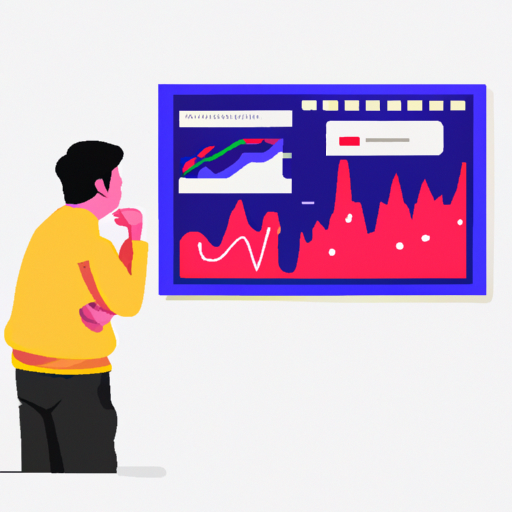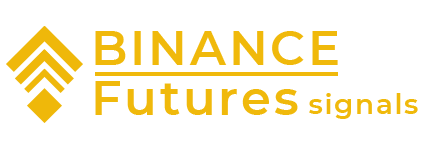I. The Basics of Crypto Trading Analysis
II. Essential Tools for Mastering Crypto Trading Analysis
III. Key Technical Analysis Strategies for Crypto Trading
IV. Important Factors to Consider in Fundamental Analysis for Crypto Trading

The Basics of Crypto Trading Analysis
Crypto trading analysis is a crucial skill for anyone looking to dive into the world of cryptocurrencies. Whether you’re a seasoned trader or just starting out, understanding the fundamentals of crypto trading analysis is essential for making informed investment decisions. So, let’s break it down and get you on the path to becoming a crypto trading pro!
1. What is Crypto Trading Analysis?
Crypto trading analysis involves studying and interpreting market data to identify patterns, trends, and potential opportunities in the cryptocurrency market. It is a combination of both technical analysis and fundamental analysis.
Technical analysis focuses on analyzing historical price and volume data to predict future price movements. Traders use various tools and indicators, such as moving averages, RSI (Relative Strength Index), and MACD (Moving Average Convergence Divergence), to make informed trading decisions.
Fundamental analysis, on the other hand, involves evaluating the underlying factors that may influence the value of a cryptocurrency. This includes analyzing the project’s team, technology, partnerships, and market demand. By understanding the fundamentals, traders can assess the long-term potential of a cryptocurrency.
2. Why is Crypto Trading Analysis Important?
Crypto trading analysis is like having a compass in the vast sea of cryptocurrencies. It helps you navigate through the volatility and make educated decisions based on data rather than emotions or hype. By studying market trends and analyzing key indicators, you can identify potential entry and exit points, manage risk, and maximize your profits.
Remember, the cryptocurrency market is highly volatile, and prices can fluctuate dramatically within a short period. Having a solid understanding of crypto trading analysis can help you stay ahead of the game and make more informed decisions.
3. How to Get Started with Crypto Trading Analysis?
To master crypto trading analysis, you need the right tools in your arsenal. Here are some essential tools to get you started:
- Cryptocurrency Price Charts: Platforms like CoinMarketCap, CoinGecko, and TradingView provide real-time price charts and historical data for various cryptocurrencies. These charts are the backbone of technical analysis.
- Trading Indicators: Explore and experiment with different technical indicators to find the ones that work best for you. Some popular indicators include Bollinger Bands, Fibonacci retracement, and Ichimoku Cloud.
- Economic Calendar: Stay updated with important events and news that can impact the cryptocurrency market. Websites like CoinDesk and CoinTelegraph offer comprehensive economic calendars.
Remember, practice makes perfect. Start by analyzing historical data, testing different strategies, and gradually refine your skills. Don’t be afraid to make mistakes along the way, as they are valuable learning experiences.
For more in-depth knowledge and resources on crypto trading analysis, check out Coin Bureau. They offer a wealth of educational content, tutorials, and market insights to help you become a crypto trading expert.
Essential Tools for Mastering Crypto Trading Analysis
So, you’ve decided to dive into the exciting world of crypto trading analysis. Good for you! But before you start making any moves, let’s talk about the essential tools you’ll need to master this game.
1. Cryptocurrency Exchanges:
The first tool you’ll need is a reliable cryptocurrency exchange. This is where you’ll buy, sell, and trade your digital assets. Look for an exchange that offers a user-friendly interface, a wide range of cryptocurrencies, and robust security measures. Some popular exchanges to consider are Binance, Coinbase, and Kraken.
2. Trading Platforms:
To effectively analyze the crypto market, you’ll need a trading platform that provides real-time data, charts, and indicators. These platforms allow you to monitor price movements, identify trends, and make informed trading decisions. Some popular trading platforms include TradingView, Coinigy, and eToro.
3. Wallets:
When you’re dealing with cryptocurrencies, security is paramount. You’ll need a digital wallet to store your digital assets safely. Wallets come in different forms, such as hardware wallets (like Ledger or Trezor) or software wallets (like Exodus or MyEtherWallet). Make sure to choose a wallet that suits your needs and offers robust security features.
4. News and Information Sources:
Staying updated with the latest news and developments in the crypto world is crucial for successful trading analysis. Follow reputable news sources, subscribe to crypto-related newsletters, and join online communities to stay in the loop. Some popular sources of crypto news and information include CoinDesk, Cointelegraph, and Reddit’s r/CryptoCurrency.
5. Technical Analysis Tools:
Technical analysis is a key component of crypto trading analysis. To master it, you’ll need access to various technical analysis tools. These tools help you identify patterns, trends, and potential entry or exit points. Some popular technical analysis tools include moving averages, Bollinger Bands, MACD (Moving Average Convergence Divergence), and RSI (Relative Strength Index). Familiarize yourself with these tools and learn how to interpret their signals.
6. Fundamental Analysis Resources:
While technical analysis focuses on price movements and patterns, fundamental analysis delves into the underlying factors that influence a cryptocurrency’s value. To master fundamental analysis, you’ll need access to resources like whitepapers, project websites, and financial statements. Dig deep into a cryptocurrency’s technology, team, partnerships, and market potential to make informed trading decisions.
7. Risk Management Tools:
Let’s face it, crypto trading can be volatile and risky. That’s why having proper risk management tools is essential. Set stop-loss orders to limit potential losses, use trailing stops to protect your profits, and diversify your portfolio to spread out the risk. Additionally, keep an eye on your emotions and practice discipline. Greed and fear can cloud your judgment, so always trade with a clear mind.
Conclusion:
Mastering crypto trading analysis requires the right tools in your arsenal. From reliable exchanges and trading platforms to wallets, news sources, and analysis tools, make sure you have everything you need to navigate the exciting and sometimes unpredictable world of cryptocurrencies. Remember, knowledge is power, so keep learning, stay informed, and trade smart!
III. Key Technical Analysis Strategies for Crypto Trading
When it comes to crypto trading, technical analysis is a powerful tool that can help you make informed decisions and maximize your profits. By analyzing historical price data and market trends, you can identify patterns and signals that indicate potential price movements. Here are some key strategies to consider:
- Trend Analysis: One of the fundamental principles of technical analysis is identifying trends in the market. By studying price charts and indicators, you can determine whether a cryptocurrency is in an uptrend, downtrend, or trading sideways. Remember, the trend is your friend, so it’s important to align your trades with the prevailing trend.
- Support and Resistance Levels: Support and resistance levels are areas on a price chart where the buying or selling pressure is significant. These levels can act as barriers, preventing the price from moving beyond a certain point. Identifying these levels can help you determine potential entry and exit points for your trades.
- Chart Patterns: Chart patterns are formed by the price movement of a cryptocurrency over time. They can provide valuable insights into future price movements. Some common chart patterns include triangles, head and shoulders, and double tops/bottoms. By recognizing these patterns, you can anticipate potential breakouts or reversals.
- Indicators: Technical indicators are mathematical calculations based on price and volume data. They can help you gauge the strength of a trend, identify overbought or oversold conditions, and generate buy or sell signals. Popular indicators used in crypto trading include moving averages, relative strength index (RSI), and stochastic oscillator.
- Candlestick Analysis: Candlestick charts provide a visual representation of price movements. Each candlestick represents a specific time period and shows the opening, closing, high, and low prices. By analyzing candlestick patterns, such as doji, hammer, and engulfing patterns, you can gain insights into market sentiment and potential reversals.
While technical analysis can be a valuable tool, it’s important to remember that it’s not foolproof. Crypto markets can be highly volatile, and unexpected events can disrupt established patterns. Therefore, it’s crucial to combine technical analysis with other forms of analysis, such as fundamental analysis, to make well-informed trading decisions.
If you’re new to technical analysis, don’t worry! There are plenty of resources available to help you learn and master these strategies. Check out Coin Bureau for in-depth articles and tutorials on crypto trading analysis. Their expert insights and comprehensive guides will equip you with the knowledge and skills you need to navigate the crypto markets successfully.
Remember, practice makes perfect. Start by analyzing historical price data, experimenting with different indicators, and observing how the market reacts. Over time, you’ll develop your own trading style and gain confidence in your technical analysis abilities.
So, put on your analyst hat and dive into the exciting world of technical analysis. With the right strategies and tools at your disposal, you’ll be well-equipped to make smart and profitable trading decisions in the dynamic crypto market.
IV. Important Factors to Consider in Fundamental Analysis for Crypto Trading
While technical analysis is essential for understanding market trends and making informed trading decisions, fundamental analysis plays a crucial role in evaluating the long-term value and potential of cryptocurrencies. By examining the underlying factors that drive the market, you can gain a deeper understanding of the intrinsic value of a cryptocurrency and make more strategic investment choices. Here are some important factors to consider when conducting fundamental analysis for crypto trading:
- Team and Development: One of the key aspects to evaluate is the team behind the cryptocurrency and their track record. Look for experienced developers and leaders who have a strong vision and are actively working on improving the technology. Additionally, consider the project’s roadmap and the milestones they have achieved so far.
- Partnerships and Adoption: Assessing the partnerships and collaborations a cryptocurrency has can provide valuable insights into its potential for widespread adoption. Look for partnerships with established companies or organizations that can help drive adoption and increase the utility of the cryptocurrency.
- Market Demand: Understanding the market demand for a particular cryptocurrency is crucial. Research the problem the cryptocurrency aims to solve and assess whether there is a genuine need for its solution. Evaluate the size of the target market and the potential for growth.
- Regulatory Environment: Keep an eye on the regulatory landscape surrounding cryptocurrencies. Government regulations can significantly impact the value and legality of cryptocurrencies. Stay informed about any regulatory developments that may affect the cryptocurrency you are analyzing.
- Community and Social Media Presence: The strength and engagement of a cryptocurrency’s community can provide valuable insights into its potential. Look for active communities on social media platforms and forums, as well as positive sentiment towards the project. A strong community can help drive adoption and increase the value of a cryptocurrency.
- Competitor Analysis: Analyzing the competition is essential in any market. Research other cryptocurrencies that are solving similar problems or targeting the same market. Compare their strengths and weaknesses to gain a better understanding of the competitive landscape.
- Tokenomics: Assess the token economics of the cryptocurrency. Look at factors such as token supply, distribution, and inflation rate. Evaluate whether the tokenomics align with the project’s goals and whether they provide incentives for long-term holding and usage.
Remember, fundamental analysis is not a crystal ball that guarantees success, but it provides a solid foundation for making informed investment decisions. By considering these factors and conducting thorough research, you can increase your chances of identifying valuable investment opportunities in the crypto market.
For more in-depth analysis and expert insights on crypto trading, be sure to check out Sublime Traders, one of the best crypto and forex signal providers. Their team of experienced traders and analysts can help you navigate the volatile world of cryptocurrencies and make more profitable trades.

